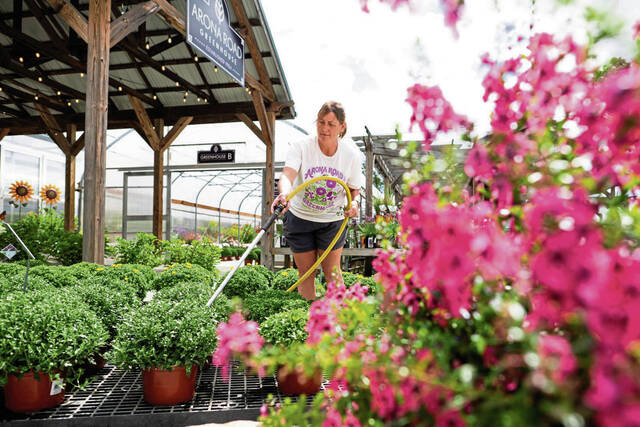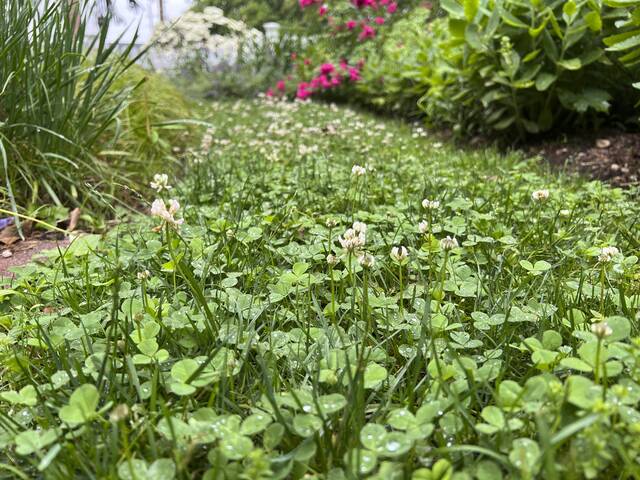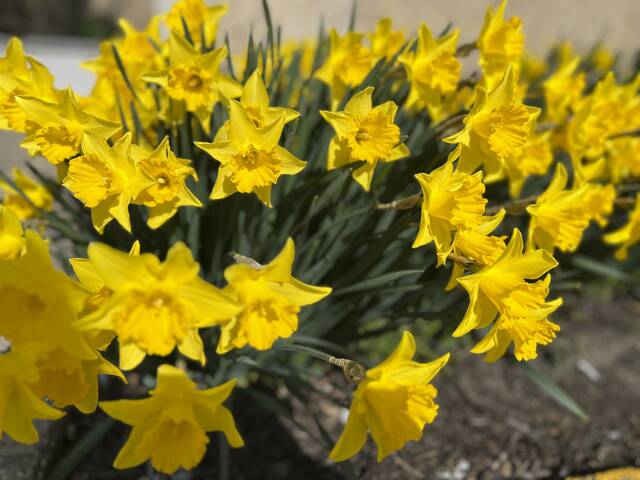Question: Please help! I just noticed that my wild plum tree in my backyard has some sort of fungus growing on it. Is there anything I can do, or is it diseased beyond repair? It was healthy this summer with many blooms. It has been in my yard for at least 20 years. My husband trimmed the tree this summer. I’ve included a photo. Any help you can give me would be greatly appreciated. The tree is a great complement to our yard.
Answer: Though the “fungus” that’s growing on your plum tree might look scary, it’s not. In fact, quite the opposite. What you’re seeing are lichens, a unique organism that is a symbiotic relationship between a fungus, an algae, and sometimes, a bacterium. The bulk of what you see when you look at a lichen is the fungal part of the partnership because it provides support for the algae and the bacterium. But, it’s not a harmful fungus at all.
Lichens are typically green-gray in color and rounded in shape (though they can sometimes look more moss-ish in appearance). There are some 13,000 different species globally. They anchor themselves to anything from rocks and tree bark to fences and bricks. Lichens do not feed on whatever they’re clinging to, which means they are not harming your tree in any way. They’re just using it as a home.
Lichens are fascinating organisms because the algae photosynthesizes to make its own food while the fungus pulls moisture and minerals from the air. Some of the carbohydrates made by the algae are fed to the fungus in a mutually beneficial exchange. Different types of lichens anchor themselves on different surfaces. Some prefer sunny locations while others prefer slightly more shade. Some prefer to live on hard surfaces while others prefer a softer place to anchor.
The lichen species that appear on deciduous trees prefer a location that provides plenty of sunlight during the spring and winter, but shady conditions during the hottest part of the year.
Lichens do not harm trees. However, you’ll often see more lichens on trees with dying or dead branches, simply because they’re opportunistic. As the branches die back due to disease or other factors, the canopy of the tree opens and lets in more light, creating an ideal environment for lichen growth. For this reason, if you’re seeing a lot of branch dieback in addition to the lichens, there could potentially be a disease issue with the tree. A certified arborist should be able to evaluate the tree’s health and inform you of any possible disease issues.
In general, lichens are a welcome sight. They indicate good air quality because they’re sensitive to air pollution.
Lichens reproduce in a somewhat unusual way, too. The fungal portion of the lichen reproduces via spores. Those spores are spread on wind and water, but they won’t turn into a new lichen unless they come in contact with the correct algae and/or bacterium species and conditions are just right. Lichens can also spread when a small piece of a larger lichen breaks off and settles on an appropriate host site. It’s really quite an amazing process.
Lichens serve several ecosystem functions. They’re a food source for certain mammals (including deer) and some bird species use them to build their nests. Phoebes and hummingbirds are quite fond of using lichen pieces in their nests.
Lichens are benign and nothing to worry about. Enjoy them for the fascinating organisms they are.








